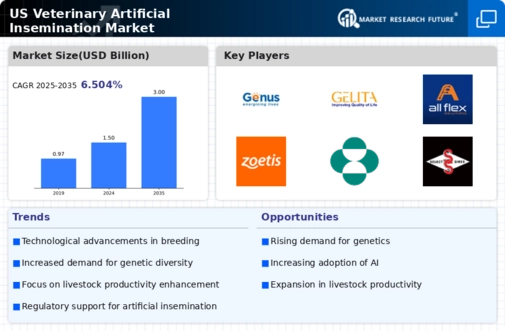The US Veterinary Artificial Insemination Market is characterized by competitive dynamics driven by a growing demand for enhanced reproductive technologies and genetic improvement in livestock and pets. As veterinary practices increasingly shift towards more efficient breeding methods, businesses in this sector are adopting innovative practices to gain an edge.
The market comprises a range of players, each striving to establish a significant foothold through strategic initiatives, product diversification, and robust customer relationships. Factors such as advancements in veterinary science, an increase in pet ownership, and rising agricultural productivity are shaping the competitive landscape, leading to an evolving and robust marketplace.
Genus is a prominent entity in the US Veterinary Artificial Insemination Market, recognized for its cutting-edge advancements in livestock genetics and breeding solutions. With a strong market presence, Genus leverages its expertise to deliver superior artificial insemination technologies that enhance reproductive efficiency and genetic quality in animals.
The company’s strengths lie in its expansive research and development initiatives, which focus on creating genetically superior breeding stock. Genus is known for its strategic partnerships and collaborations, enhancing its distribution channels and customer reach within the veterinary sector. These strategies position Genus favorably to respond to evolving market demands, allowing the company to maintain a competitive edge in the breeding and artificial insemination landscape.
Vitro Diagnostics is another key player in the US Veterinary Artificial Insemination Market, noted for its comprehensive range of diagnostic solutions tailored for veterinary practices. The company focuses on providing high-quality products that aid in the evaluation and monitoring of animal reproductive health.
With a commitment to innovation, Vitro Diagnostics offers important services such as semen analysis and hormone testing, which are crucial for optimizing artificial insemination processes. The company has established solid market presence through its dedicated service offerings and customer support, ensuring veterinary practitioners have the tools needed for successful artificial insemination.
Vitro Diagnostics’ strengths include a well-established reputation for reliability and accuracy, and ongoing efforts in mergers and acquisitions to bolster its product portfolio help the company maintain a prominent position in this competitive market space, particularly focused on advancing reproductive technologies in the United States.





















